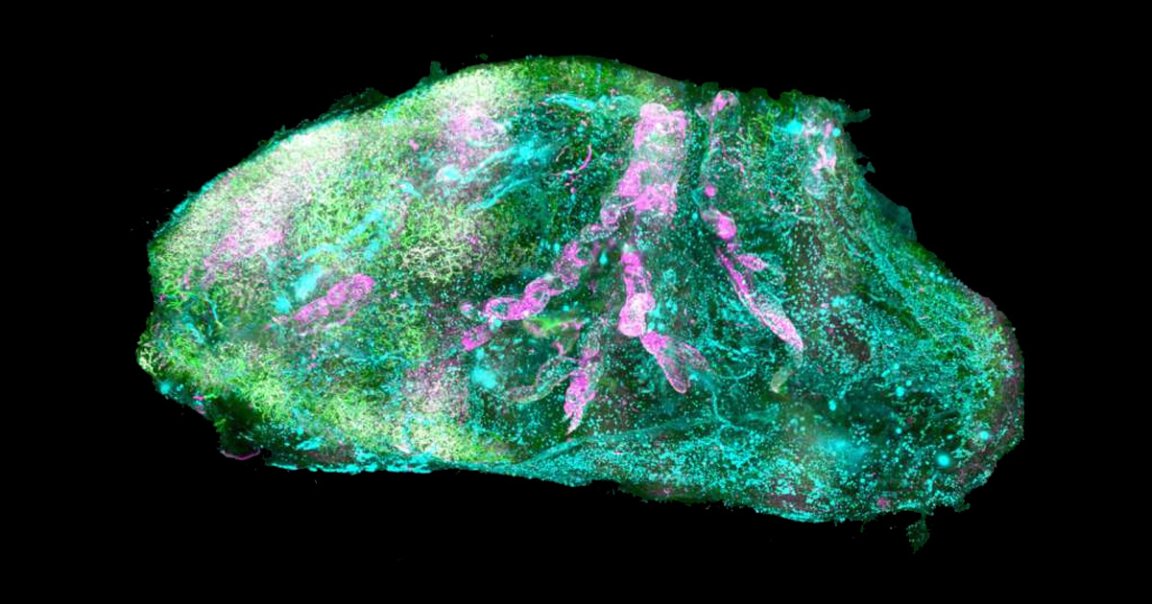
Traditionally, getting a clear answer about what’s going on inside our organs has required deep cuts — literally, by slicing up tissue.
In April 2019 the process saw a revolution as researchers, led by director of the Institute for Tissue Engineering and Regenerative Medicine at the Helmholtz Institute Ali Ertürk, 3D printed transparent human organs using stem cells. Now, a team also led by Ertürk has announced in the journal Cell that they’ve overhauled their technique — creating stunning images of a transparent human brain, eye, and kidney.
Creating transparent organs relies on a process called “optical clearing.” Essentially, all tissues contain water, lipids, and protein which refract light. By adding chemicals that alter refraction, researchers can exploit these properties to allow light through tissue.
Adult human organs tend to build up dense, light-blocking tissues, but a new combination of chemicals can bore through those tissues allowing us to see through them. The team took images using a laser-scanning microscope, and used deep learning algorithms to analyze hundreds of millions of cells in 3D. They call the technique “Small-micelle-mediated Human orgAN Efficient clearing and Labeling,” or SHANEL.
Ertürk and his squad ultimately hope to use their organ maps as templates for 3D printing functional human organs. The printed organs will need to be tested in animals first, but by printing functional human organs, they aim to cut down on the wait for organ transplants.
“The waiting time for patients and the transplantation costs are a real burden,” Ertürk explained in a press release, “detailed knowledge about the cellular structure of human organs brings us an important step closer to creating functional organs artificially on demand.”